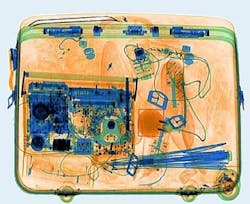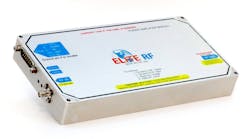WASHINGTON, 13 March 2013.Baggage screening experts at the U.S. Department of Homeland Security (DHS) in Washington are reaching out to industry to find revolutionary new ways of using X-ray at airport security check points to detect improvised explosive devices (IEDs) hidden in passenger luggage.
DHS released a broad agency announcement late last week (BAA13-05) for the Advanced X-ray Material Discrimination program, which seeks to overcome the limitations of traditional X-ray technology to detect IEDs in passenger checked bags and carry-on items.
From industry and academia, DHS officials are looking for technologies that increase the mathematical discrimination between IEDs and benign items that go through airport security screening devices every day.
Conventional energy-dispersive X-ray spectroscopy (EDS) X-rays use two basic discriminating signatures, DHS officials explain: effective atomic number and density of screened objects.
The Advanced X-ray Material Discrimination program seeks to find ways of identifying additional discriminating signatures between IEDs and legal items to improve detection capability with reduced false alarm rates.
The program's primary focus is on five areas: X-ray test bed prototypes; supporting analytical tasks; test and evaluation support; architectural components; and X-ray system architectural design concepts. DHS officials say they expect to make several research contract awards for each task area.
DHS researchers will use a specialized X-ray test bed employing new signature measurement techniques to perform IED threat and clutter characterization.
The program seeks to develop new discriminating X-ray signature approaches in test bed prototypes using baggage data collected at airports.
The new improvised explosive threat signature techniques baggage-characterization data will help researchers involved in mathematics, X-ray physics, explosive materials and chemistry, information science, and equipment developers to lay out a technical framework for significantly enhanced EDS and AT systems, DHS officials say.
In addition, DHS officials say they would like the Advanced X-ray Material Discrimination program to capitalize on other government research, such as the Knowledge Enhanced Compressive Measurement (KECoM) program at the U.S. Defense Advanced Research Projects Agency (DARPA).
Companies or colleges interested in participating should send white papers to DHS no later than 8 April 2013. Based on white paper submissions, DHS researchers will ask for formal proposals individually.
Email questions or concerns to DHS at [email protected]. More information is online at https://www.fbo.gov/spg/DHS/OCPO/DHS-OCPO/BAA13-05/listing.html.



